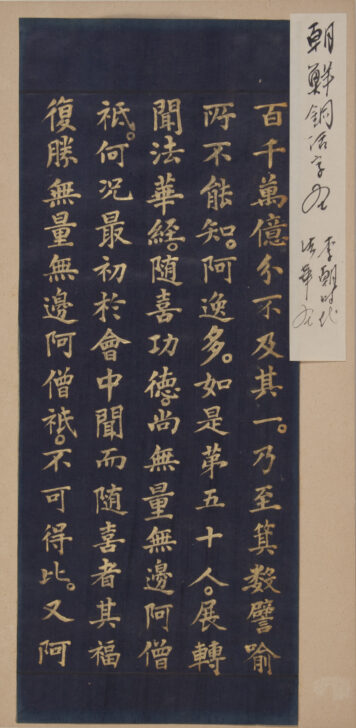Sutra Fragment, Calligraphy in Block Script
Japanese

Description
Originally Buddhist teachings were transmitted orally; later they were written down. These texts are known as sutras. Some sutra fragments have text in brushed calligraphy, and others are printed with woodblocks. These variations were shaped by the producers’ cultures, the availability of materials and technologies, and the socio-economic level of the patron and/or copyist.
This sutra was transcribed using kanji (meaning “Chinese characters”), which were adopted in Japan following the introduction of Buddhism in the sixth century. Sutras often promote the recitation, memorization, copying, and spread of Buddhist texts, all of which were critical to the spread of Buddhism. Transcribing the Buddha’s teachings in this way both preserved and disseminated the Buddha’s teachings and enabled Buddhist practitioners to accrue karma, empowering them on their journey toward enlightenment.
Subject Matter:
The production of luxurious sutras like this speak to the understanding of religious texts as Buddhist relics, as these works would not be actively read, but rather, donated to a temple or shrine and treated as a sacred object in their own right. Sutras like this one were often ritually buried at sacred sites.
Physical Description:
An excerpt from the Lotus Sutra (Japanese: Myōhō Renge Kyō), this sutra uses gold pigment on indigo dyed paper.
Usage Rights:
If you are interested in using an image for a publication, please visit https://umma.umich.edu/request-image/ for more information and to fill out the online Image Rights and Reproductions Request Form.